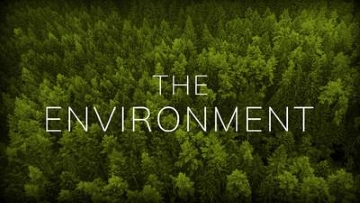Managing Environment Variables with PowerShell
posted in dev-setup on • by Wouter Van Schandevijl • last updated onWorking with environment variables in Windows is as easy as:
Win + Pause > "Advanced system settings" > "Environment Variables..."
After which you get a tiny, unresizable, form where you can view and manage them. Something better eventually arrived with Windows 10 but still, PowerShell :)
Use Autohotkey to open the window with Left Alt + Pause:
LAlt & Pause::Run % "rundll32 sysdm.cpl,EditEnvironmentVariables"
If you’d like a GUI instead you could try:
Getting environment variables
# Listing all environment variables
Get-ChildItem Env:
env
# Or just those containing path
Get-ChildItem Env:*PATH* | Format-List
# Display a specific one (case insensitive)
$env:PATH
[environment]::GetEnvironmentVariable("PATH", "Process")
# They are the union of
# Machine: HKEY_LOCAL_MACHINE\System\CurrentControlSet\Control\Session Manager\Environment
[environment]::GetEnvironmentVariable("PATH", "Machine")
# User: HKEY_CURRENT_USER\Environment
[environment]::GetEnvironmentVariable("PATH", "User")
In cmd.exe, all envs can be listed with set.
Managing environment variables
# Managing current session environment
$env:test = "value"
Remove-Item Env:test
# Persistent registry management (registry)
[Environment]::SetEnvironmentVariable("yaye", "value", "User")
[Environment]::SetEnvironmentVariable("yaye", "$null", "User")
# Requires RunAs Admin
[Environment]::SetEnvironmentVariable("yaye", "value", "Machine")
When using the PowerShell $env:key = "val", the environment changes are available only for the current session.
When using the .NET [Environment]::SetEnvironmentVariable, the changes are persisted to the registry
but they do not become available in the current session.
A helper function to the rescue!
Set-Alias se Set-Environment
function Set-Environment([String]$key, [String]$value) {
[System.Environment]::SetEnvironmentVariable("$key", "$value", "User")
Set-Item -Path Env:$key -Value $value
}
Already opened processes, tabs, etc won’t see these environment changes. The environment can be refreshed from the registry however.
Set-Alias re Refresh-Environment
function Refresh-Environment {
$locations = 'HKLM:\SYSTEM\CurrentControlSet\Control\Session Manager\Environment', 'HKCU:\Environment'
$locations | ForEach-Object {
$k = Get-Item $_
$k.GetValueNames() | ForEach-Object {
$name = $_
$value = $k.GetValue($_)
Set-Item -Path Env:$name -Value $value
}
}
# Put Machine and User $env:PATH together
$machinePath = [Environment]::GetEnvironmentVariable("PATH", "Machine")
$userPath = [Environment]::GetEnvironmentVariable("PATH", "User")
$Env:PATH = "$machinePath;$userPath"
}
If you have chocolatey installed, RefreshEnv will also work.
$env:PATH helpers
Use fp to list all directories in $env:path.
It accepts a search needle as parameter. ex: fp node.
By using the PowerShell builtin variable $args, it is not required to
put quotes around directories containing spaces.
Set-Alias fp Find-EnvironmentPath
function Find-EnvironmentPath {
$needle = ($args -join " ").TrimEnd("\")
$needle = [Regex]::Escape($needle)
$env:PATH.split(";") |
Where-Object { $_.TrimEnd("\") -match $needle } |
Sort-Object |
Get-Unique -AsString
}
Append a directory to the User path with ap c:\bins.
Set-Alias ap Append-EnvironmentPath
function Append-EnvironmentPath {
$toAppend = ($args -join " ").TrimEnd("\")
if (-not (Test-Path $toAppend)) {
Write-Host "Path doesn't exist..."
Write-Host $toAppend
return
}
$env:PATH = $env:PATH + ";$toAppend"
$userPath = [Environment]::GetEnvironmentVariable("PATH", "User")
[Environment]::SetEnvironmentVariable("PATH", "$userPath;$toAppend", "User")
}
Remove a directory from the User path with delp c:\Program Files\someBin.
Set-Alias delp Remove-EnvironmentPath
function Remove-EnvironmentPath {
$toRemove = ($args -join " ").TrimEnd("\")
$userPath = [Environment]::GetEnvironmentVariable("PATH", "User")
$changedUserPath = $userPath.Split(";") |
ForEach-Object { $_.TrimEnd("\") } |
Where-Object { $_ -ne $toRemove }
$changedUserPath = $changedUserPath -Join ";"
if ($userPath -ne $changedUserPath) {
[Environment]::SetEnvironmentVariable("PATH", "$changedUserPath", "User")
$env:PATH = [Environment]::GetEnvironmentVariable("PATH", "Machine")
$env:PATH += ";$changedUserPath"
return
}
echo "Not removed"
$machinePath = [Environment]::GetEnvironmentVariable("PATH", "Machine")
$isInMachine = $machinePath.split(";") | Where-Object { $_.Trim("\") -eq $toRemove }
if ($isInMachine) {
echo "Is present in Machine scope"
}
}
Useful environment variables
Win + Pause: Control Panel\System and Security\System
PowerShell: $env:USERNAME
Cmd: %USERNAME%
These are probably worth remembering.
"$env:USERNAME@$env:USERDOMAIN"
$env:APPDATA
# C:\Users\Wouter\AppData\Roaming
$env:HOME
$env:USERPROFILE
# C:\Users\Wouter
$env:LOCALAPPDATA
# C:\Users\Wouter\AppData\Local
$env:TEMP
# C:\Users\Wouter\AppData\Local\Temp
- 25 August 2018

